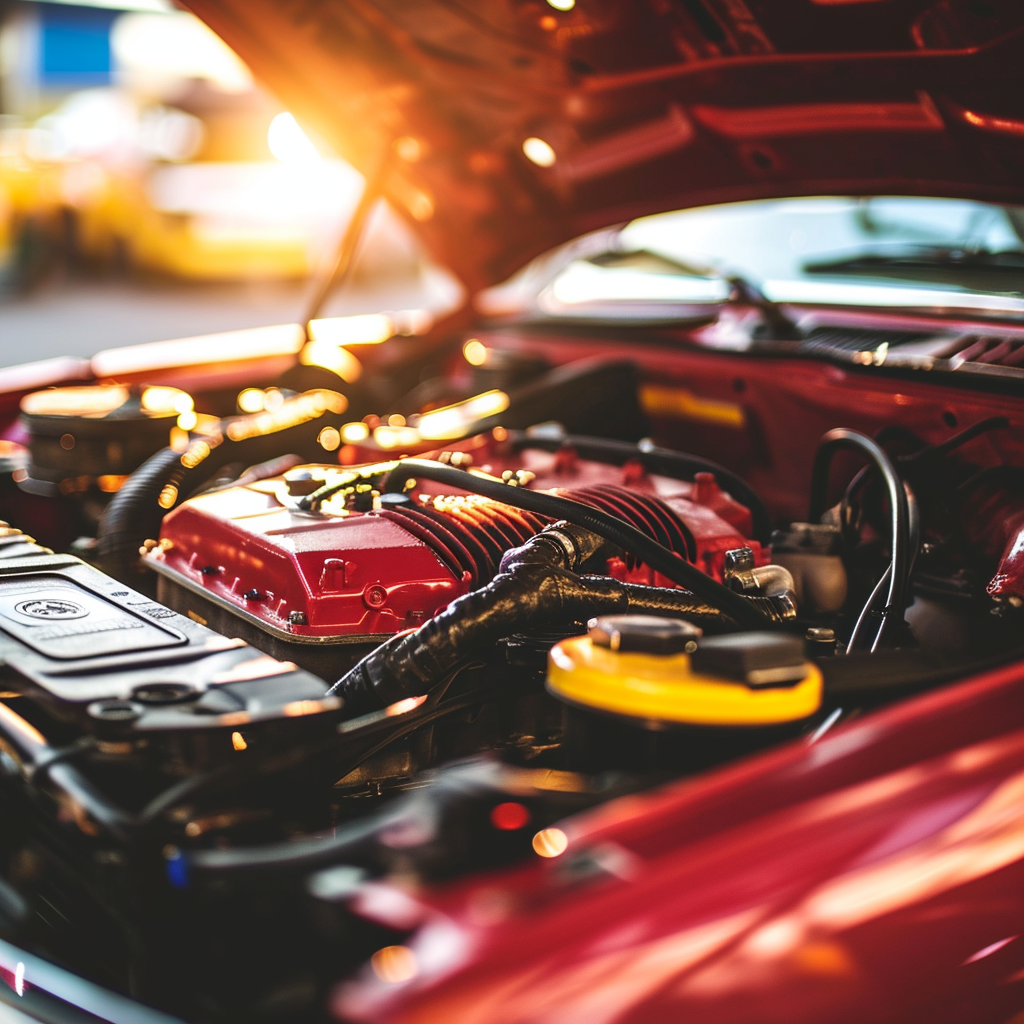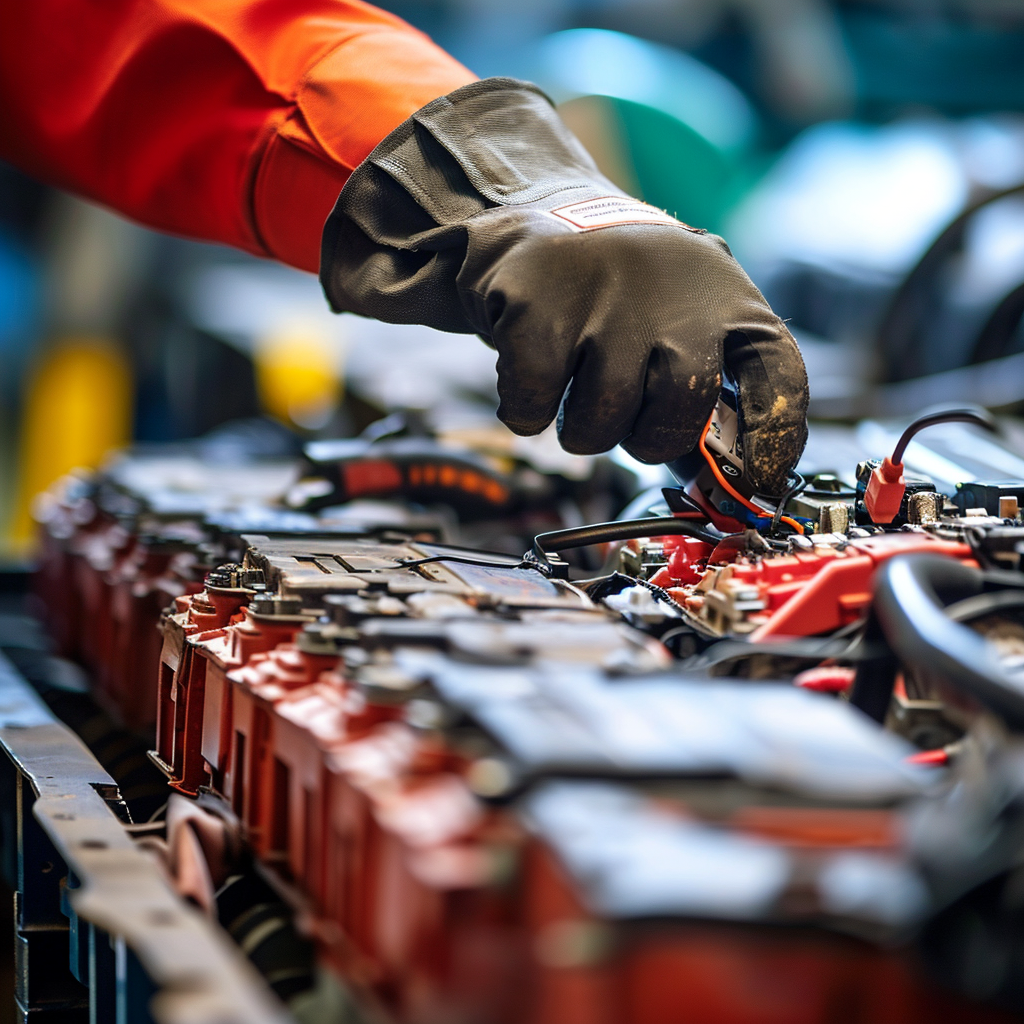Contents
- 1 Understanding Car Battery Types and Specifications
- 2 Researching Reputable Car Battery Brands from China
- 3 Deciphering Battery Terminology and Technical Details
- 4 Determining the Right Size Battery for Your Vehicle
- 5 Safety Considerations When Installing a New Battery
- 6 Troubleshooting Common Car Battery Issues
- 7 Conclusion
Purchasing a new car battery can be an intimidating process, especially when sourcing from overseas suppliers. With so many technical specifications, confusing terminology, and options to consider, it’s easy for beginners to feel overwhelmed. This comprehensive guide aims to make the process straightforward for novices buying a replacement Chinese car battery.
We’ll begin by breaking down the different types of car batteries and specifications to understand. You’ll learn how to decipher technical battery details and terminology. We’ll also explore the top Chinese brands and provide tips for vetting quality manufacturers. Determining the optimal battery size and placement for your make and model is key, so we’ll cover that process step-by-step. Safety best practices will be reviewed, as well as troubleshooting advice for diagnosing and solving common car battery problems.
Follow along as we demystify Chinese car battery selection for beginners. With the insights and practical guidance provided in this guide, you’ll feel empowered to make an informed battery purchase decision for your vehicle. Let’s get started!
Understanding Car Battery Types and Specifications
When selecting a replacement car battery from China, the first step is gaining a basic understanding of the different types of automotive batteries available. This knowledge will allow you to narrow down your options and choose the best battery technology for your specific vehicle.
There are three main types of car batteries:
- Lead-acid batteries – The most common and affordable option. Lead-acid batteries use lead plates submerged in an electrolyte solution of sulfuric acid. They provide high cold cranking amps to start an engine but are less durable.
- Absorbed glass mat (AGM) batteries – A more advanced lead-acid battery using fibers and glass mats to absorb the electrolyte. Provides increased power and longer life than standard lead-acid.
- Lithium-ion (Li-ion) batteries – The newest battery technology, using lithium cells for a lightweight and high-performance option. Holds charge longer but the most expensive type.
When comparing specifications, key factors to look for include:
- Voltage rating – Typically 6 or 12 volts for passenger vehicles. Match this to your car’s voltage.
- Cold cranking amps (CCA) – The battery’s ability to start the engine in cold weather. Higher is better.
- Reserve capacity rating (RC) – The time a battery can run electronics with the engine off. Higher equals longer reserve power.
- Physical size – Measure the space in your vehicle to find a properly fitting replacement.
Understanding these specifications will make decoding battery terminology and details easier as you research options. With this foundation, you can zero in on the ideal battery type and rating for your car when shopping Chinese suppliers.

Researching Reputable Car Battery Brands from China
China produces batteries for many major automotive brands, but buying direct from unknown Chinese manufacturers can be risky. When sourcing a replacement car battery from China, it’s important to vet suppliers thoroughly and look for signs of quality.
Here are some tips for identifying reputable Chinese car battery brands:
- Check for certifications – Look for ISO9001 or other international quality standards. This helps verify safety and reliability.
- Investigate their clients – Legitimate battery makers should have reputable car company clients that can vouch for them.
- Review ratings and reports – Search for third-party reviews and complaints to gauge customers’ experiences.
- Research the company history – Look for experienced companies operating for 10+ years. Newer brands are higher risk.
- Check for a local presence – Suppliers with offices or representatives in your country are preferable for support.
- Inquire about testing and warranties – Reputable brands rigorously test products and offer guarantees.
Some examples of trusted Chinese car battery manufacturers include Chaowei, Tianneng, Leoch, Fengfan and Lionpose. But there are many others with varying levels of quality. Taking the time to thoroughly evaluate any company before purchasing will help avoid receiving an unreliable or counterfeit battery. Checking reviews and talking to the supplier can give you confidence in the battery’s origins.
Deciphering Battery Terminology and Technical Details
Once you’ve settled on a reputable supplier, the most challenging part can be deciphering the technical battery details. Chinese manufacturers may use unfamiliar terminology or specifications not explained clearly for end consumers.
Here are some key battery terms and attributes to look for:
- Battery classification – Batteries have group sizes like 60H, 65AH, or H5. Match this to your current battery.
- CCA and HCA – Cold cranking amps measure starting power in cold weather. Hot cranking amps indicate starting power in heat. Higher numbers are better.
- RC rating – The reserve capacity indicates how long the battery can run accessories without the alternator.
- Cranking power – This details how much power the battery can provide to start the engine.
- Capacity rating – Measured in amp-hours (Ah), this indicates the energy storage and running time. Higher Ah is better.
- Physical dimensions – Double check the measurements including length, width, and terminal position to ensure fit.
- Warranty period – Battery warranties average 2-3 years for lead-acid and up to 5 years for AGM and lithium-ion.
Don’t hesitate to contact the manufacturer if confused by any terminology or specifications provided. They should clarify all technical details in understandable terms. Taking the time to fully understand the battery’s ratings and capabilities will prevent purchasing the wrong model.
Determining the Right Size Battery for Your Vehicle
One of the most important steps when replacing your car battery is ensuring you get the properly sized battery for your make and model. Installing one that is undersized or too large can lead to a poor fit or operational issues.
Follow these tips to determine the optimal battery size:
- Refer to your owner’s manual – The manual should indicate the factory battery type and any replacement size requirements.
- Check the current battery – Look at the existing battery’s physical size, capacity rating (Ah), and group number for a matching replacement.
- Use an online battery finder – Parts store websites have tools to enter your vehicle info and find the right battery model.
- Measure the battery tray – Use a tape measure to measure the length, width and height of the space available for the new battery.
- Allow room for terminals – Make sure the new battery’s terminal position and size will properly align with the connectors.
- Consider any added accessories – If you have aftermarket electronics, you may need a higher capacity battery.
Sticking as closely as possible to your existing battery’s specifications is the safest approach. Even slight size variations of an inch or more, or Ah differences, can prevent an optimal fit. Taking precise measurements of the space and accounting for terminal placement will ensure battery-buying success.
Safety Considerations When Installing a New Battery
Once your new Chinese car battery arrives, it’s important to follow proper safety precautions when handling and installing it yourself. Taking the necessary steps will prevent injury or damage to you, your vehicle, or the battery.
Here are some key battery installation safety tips:
- Use protective gear – Wear gloves and eye protection when working with batteries to avoid injuries.
- Remove jewelry – Remove metal jewelry which could cause electrical shorts against the battery terminals.
- Disconnect the old battery – Always disconnect the negative terminal first when removing the old battery.
- Avoid touching terminals – Never allow battery terminals to contact each other or other metal components.
- Clean corrosion – Use a wire brush to clean battery tray and cable connectors to improve connections.
- Carefully handle the new battery – To avoid damage, avoid dropping and grasp by the case, not terminals.
- Securely install the new battery – Ensure the battery is situated firmly in the tray and no parts are loose.
- Reconnect cables properly – Connect the positive cable first, then the negative when attaching the new battery.
- Dispose of old batteries properly – Old batteries should be recycled and not disposed of in normal trash.
Following basic precautions and manufacturer’s instructions will allow you to safely install your new Chinese replacement battery. Take it slow, work in a well-ventilated area, and avoid forcefully handling the battery.
Troubleshooting Common Car Battery Issues
Despite getting a quality replacement battery, you may encounter certain issues down the road. Batteries can fail prematurely or exhibit problems that affect the vehicle’s electrical system. Identifying and troubleshooting any problems quickly is key.
Here are some common car battery issues and troubleshooting tips:
- Slow cranking – If the engine cranks slowly or not at all, the battery terminals may be corroded or connections loose. Clean and tighten the cables.
- Battery draining quickly – A battery that drains within a day may indicate a bad alternator not recharging properly. Have your alternator tested.
- Crackling noises – Strange sounds from the battery can signal a bad cell. Allow the battery to fully charge and retest before replacing.
- Warning light on – If the battery or charging system warning light comes on, there could be an issue with the battery itself or the alternator.
- Old age – Most standard car batteries last 3-5 years. Premature failure may just indicate the end of its normal lifespan.
- Damage – Cracks in the case or cover could indicate physical damage affecting performance. Replace if severe.
Start troubleshooting by having your battery tested to determine if it is still sufficiently holding a charge. If the battery checks out, examine connections and the alternator next. Catching small issues quickly can help maximize the life of your new battery.
Conclusion
Purchasing a replacement car battery from China can be daunting for those doing it for the first time. But armed with the right knowledge about battery types, specifications, reputable brands, terminology, sizing, safety and troubleshooting, you can make an informed buying decision.
The key is taking the time upfront to thoroughly research the battery options for your specific vehicle. Verify that any Chinese manufacturer under consideration is reputable and meets quality standards. Carefully check the technical details to ensure an accurate match to your existing battery.
With attention to proper sizing, safe installation protocols, and quick troubleshooting of any issues, your new Chinese battery can provide years of reliable performance. Employing the guidance provided in this beginner’s guide will give you confidence that you’re choosing the optimal new battery for your car’s needs.

